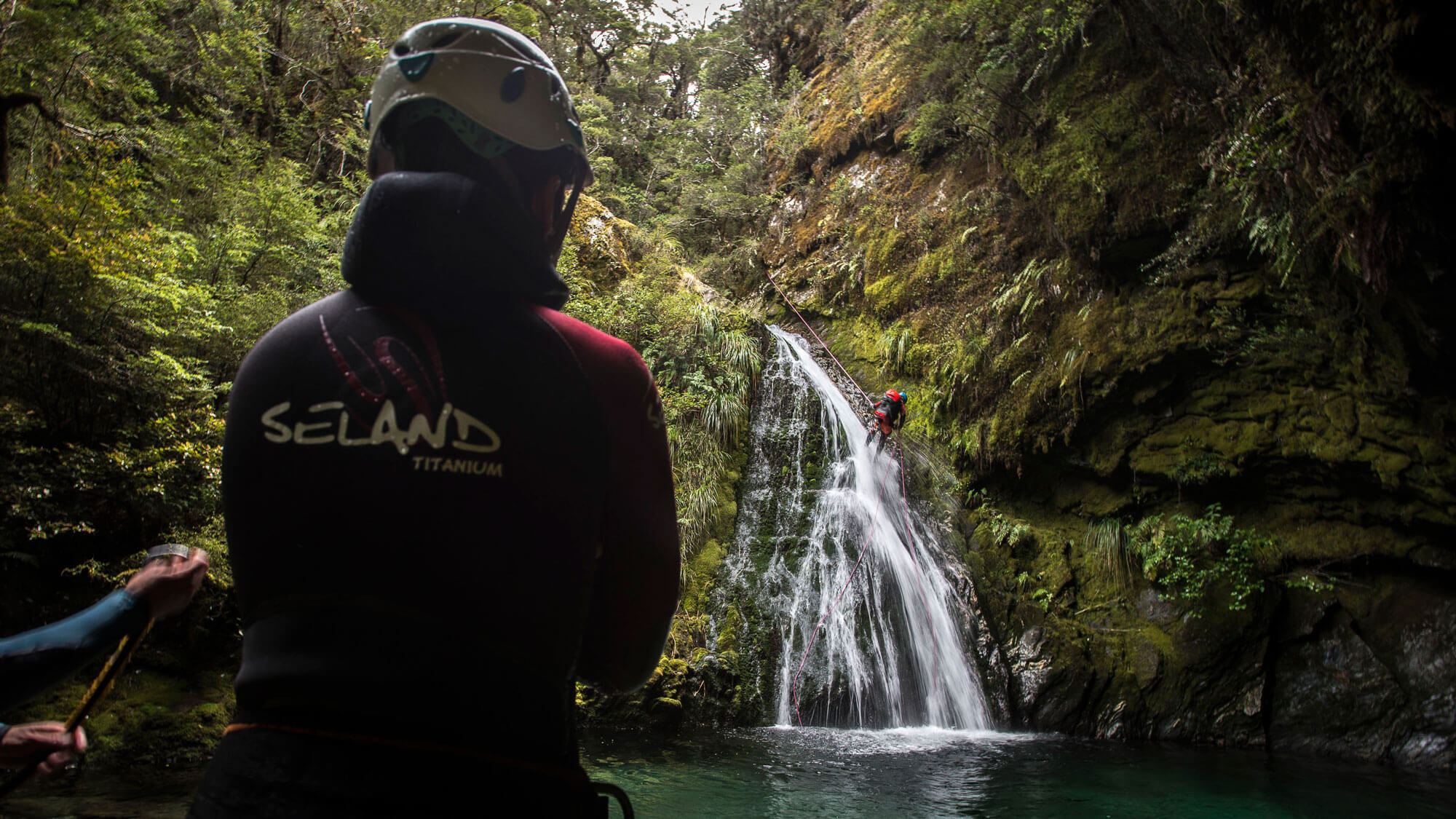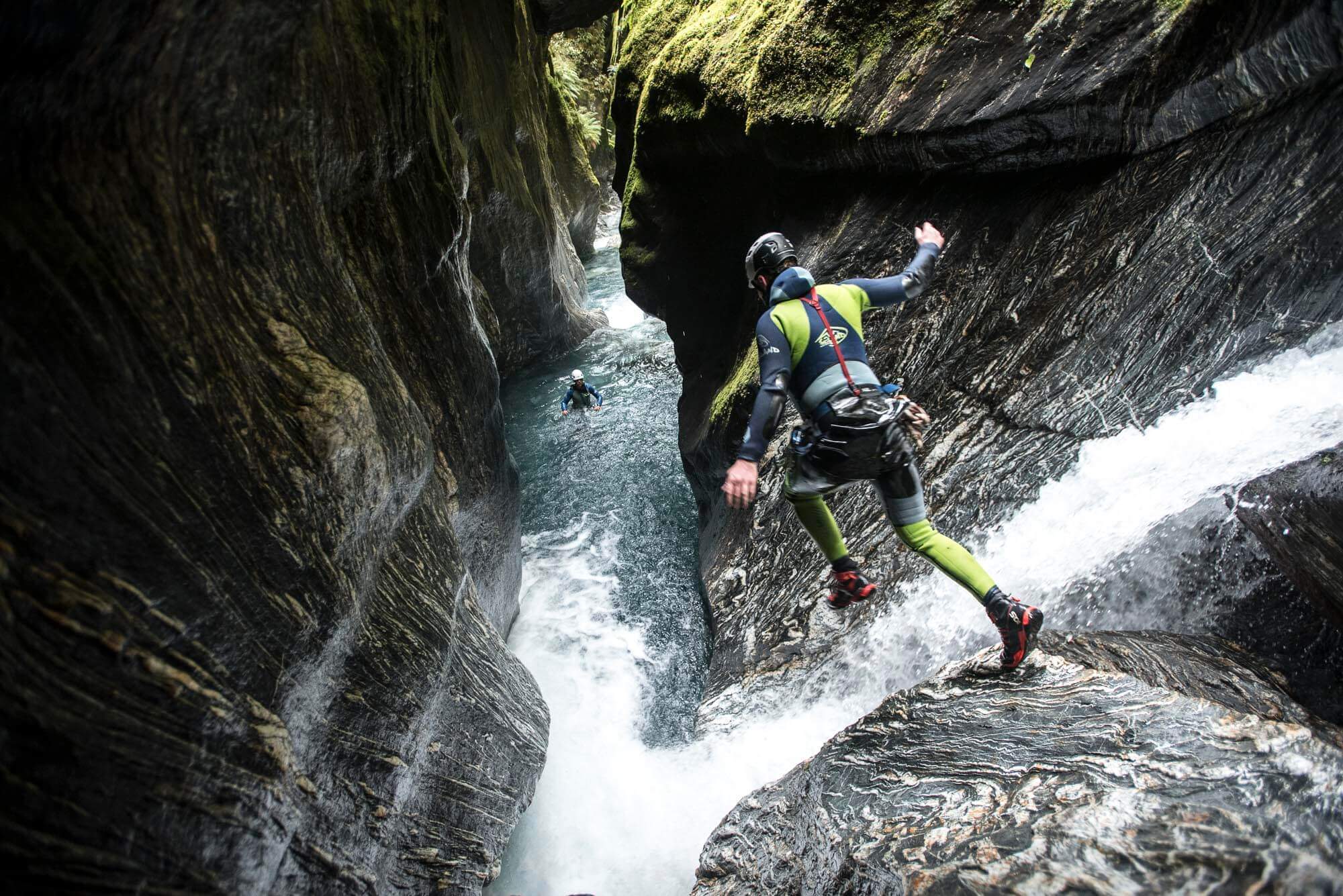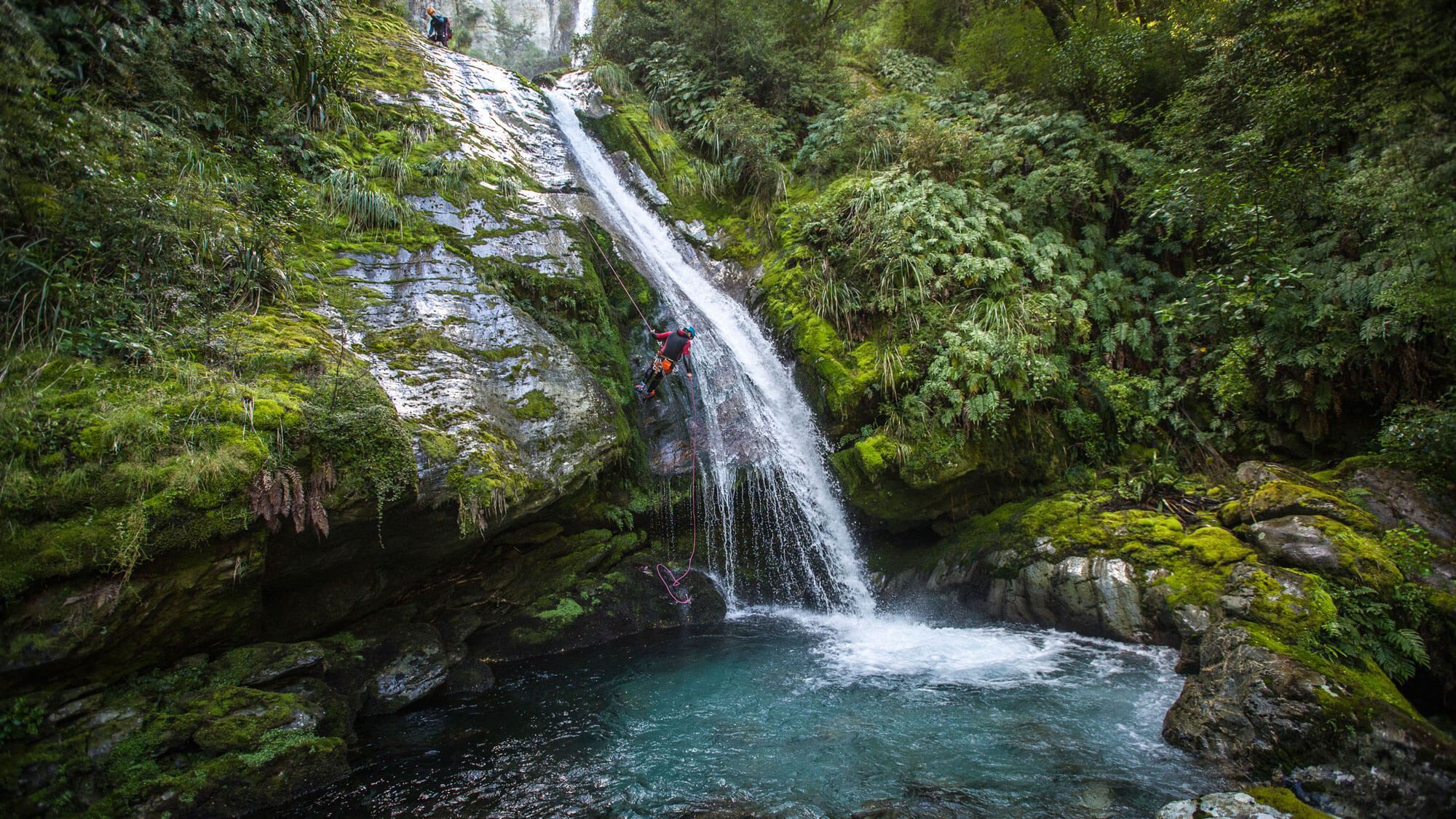What is Canyoning?
Canyoning (or canyoneering in the USA) is the sport of descending water courses such as creeks, streams and rivers using techniques such as rappelling, swimming, jumping, sliding, walking, hiking and down climbing. It is practiced in gorges or canyons usually carved by the water or glacier activity, and are generally present in mountaineous areas around the world. Waterfalls are a common sight in canyoning and provide challenges requiring rope skills and other progression techniques to be descended safely. As a mountaineering activity, it requires specific knowledge and equipment to be practiced safely. Canyoning is considered an exploration sport, although specific competitions are also held occasionally.
Typically when we say “canyon”, we mean a narrow gorge or ravine, rather than something large like the Grand Canyon in the USA. Despite there’s often some confusion about the true nature of the sport. I remember seeing a t-shirt one that had “Canyoning: There is No Boat” printed on the back of it… You get the point!
Part of a free online canyoning course, this article will help you better explain the sport to others in a simple and concise way.
Definition of canyoning
The sport of canyoning is the descent of a watercourse within a gorge or ravine by any means necessary. In easy, non-technical canyons we might just walk, perform simple climbing movements, or swim/wade in water-filled natural pools. There may be an occasional jump or slide, but the progression should be straight-forward and performed without the need for technical knowledge. Nonetheless, we should always watch the weather and make an assessment if it’s safe to go prior to starting any descent, and always have an emergency plan.

Technical canyoning, on the other hand, requires special skills and knowledge only acquired by dedicated training. This type of canyoning will usually require specific equipment (i.e. ropes and harnesses for rappelling/abseiling). The difficulty of swimming may also increase with whitewater movements; down-climbing may have more challenging sections; Large jumps or slides may be mandatory.

With the growth of canyoning worldwide, many techniques have been developed to overcome the obstacles specific to canyoning. The use of releasable systems, specialised equipment such as static ropes and canyoning descenders aim at turning the practice of the sport safer and more enjoyable. These are some of the aspects that differentiate the sport from climbing and caving for example: canyoning is an activity that focus on the descent of a watercourse and very rarely involves rock climbing.
Canyoning ca be practiced by people from all ages and ability levels, depending on the chosen canyon. Easy canyoning routes will have small and uncomplicated obstacles and slow moving water. Challenging canyoning descents will require expertise in problem-solving and advanced technical knowledge to be descended safely.
Origins of canyoning
The origins of canyoning as a standalone activity trace back to France in late 19th century. Edouard Alfred Martel, known as the ‘father of modern speleology’, was a pioneer of cave exploration, study, and documentation. Using adapted caving equipment, he first introduced canyoning techniques in order to conduct important works of science in the hard-to-reach areas of the gorges.
With development of the interest for canyoning, many mountaineers and cavers began practicing the activity, and soon manufacturers like Petzl began to take interest in developing canyoning-specific equipment to better meet canyoning descent requirements.
How to start canyoning
This is how it starts: one of your friends invites you to go out for day canyoning in the outdoors, and you get excited about the scenery, technicality and environment and decide to learn canyoning so you can go explore more places like that. Canyoning (or canyoneering) will surely get you hooked on the first go.

Canyoneers are passionate about the activity and often look for the steepest and narrowest descents: at least I know I do! These are the canyons that provide the most excitement but also comes at the price of higher risks. Despite, there is also beauty in easier canyons that are open and sunny and we can have a lot of fun in those too.
In summary:
Whether technical or non-technical,canyoning/canyoneering is all about getting down the watercourse and overcoming challenges along the way. Make sure you learn the essentials of canyoning before trying it out: a good starting point is this free online canyoning course.



